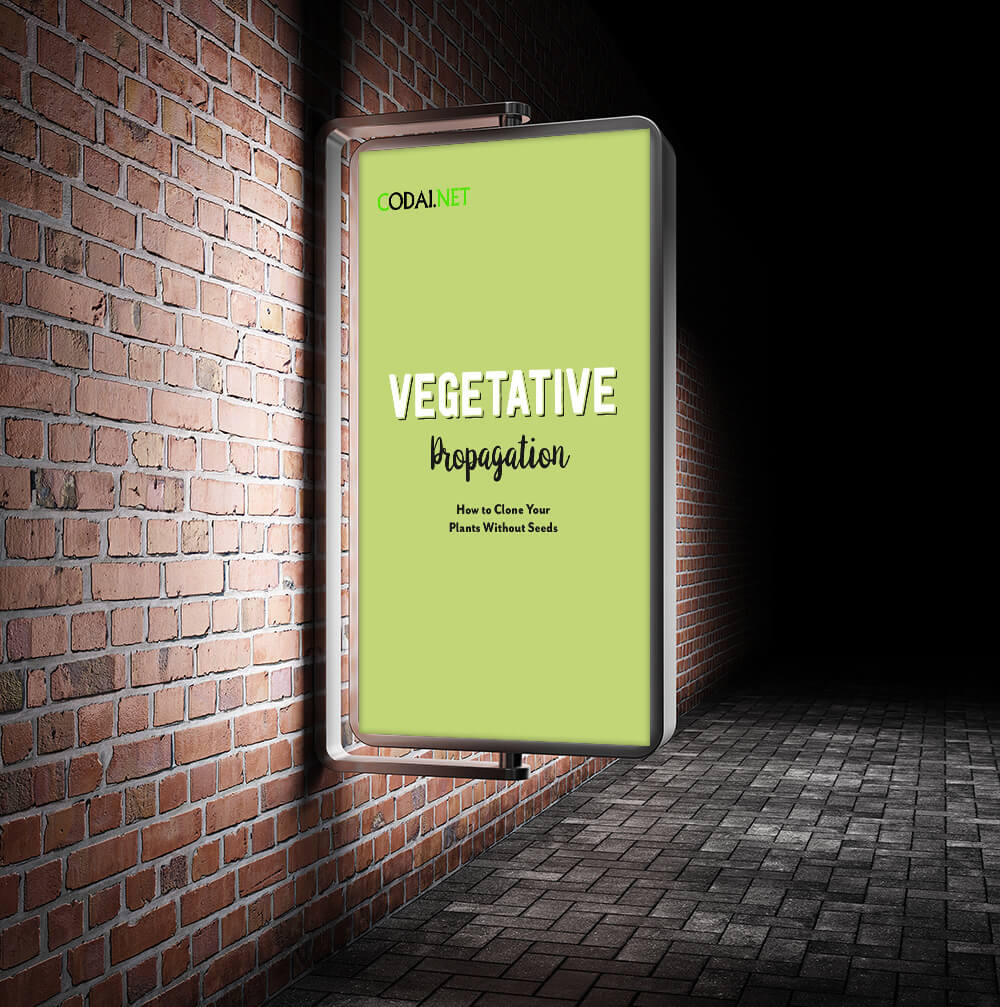Ebook Việt Hoá] Plant parenting: Easy ways to make more houseplants vegetables and flowers - LESLIE F. HALLECK
[Ebook Việt Hoá] Plant parenting – LESLIE F. HALLECK (Nhân giống cây) – OFFSET (Nhân giống bằng tách chồi Offset)
- Nguồn: [Ebook Việt Hoá] Plant parenting: Easy ways to make more houseplants, vegetables, and flowers – LESLIE F. HALLECK (Nhân giống cây: Những cách dễ nhất để nhân giống cây cảnh trong nhà, rau và hoa)
- Biên tập: Dũng Cá Xinh (Tháng 08/20201)
- Dịch: Huyền Nguyễn
English
There are some very considerate plants that do most of the propagation work for you in advance. Such plants produce small, fully functional daughter plants complete with root systems at the end of a long flowering stem, at the base of the crown, along the stem at leaf axils, or even along leaf margins. These tiny clones go by a few names, such as offsets, pups, plantlets, or runner plantlets. This is an effective way for a plant to clone itself, especially if a compatible pollination partner doesn’t happen to be nearby. Potting up these pups is also a really easy way to make more of the plants you love.
Airplane plant is a classic tropical houseplant that produces runner plantlets en masse, making it
a favorite for home propagating. You’ll notice these plants develop long flower shoots and, at the ends of these shoots, you’ll find several runner plantlets. Moth orchids occasionally produce baby orchid plantlets— specifically called keikis when referring to orchids—off their main stem, or sometimes on the flowering stem. Often these plantlets will continue growing larger on the stem. As soon as a plantlet comes in contact with water or soil, it will develop new root tissue and continue growing. All you have to do is snip it off and either set in water to stimulate root growth or pot it up in a small container with potting mix.
Strawberries are another classic runner plant, sending out long runner shoots (stolons) that contain small plantlets with tiny node roots just waiting to touch the soil.
Many succulent plants, including aloe, agave, bromeliad, haworthia, and pilea, develop small pups on underground stems that are close to the soil surface— or even directly on the stem. You’ll see them popping up in the soil at the base of the mother plant. Some air plants, such as bromeliads, develop pups right on the crown above the root zone. You can gently pull or cut these pups away from the mother plant (retaining some root initials).
It’s best to let newly cut succulent plant pups dry and callus for a few days before water rooting them or placing them in plug trays or small containers with growing media. If you’re removing pups from plants out in the garden, and indoor potted plants, the best time to do so is late spring and early summer, when plants are most actively growing.
Many orchids grow upright (monopodal) and produce small keikis (offsets) along their stems that you can remove and pot up in the same way. You can force the growth of keikis by topping an upright orchid that has grown tall and has started producing lateral aerial roots along the stem—much like taking a stem-tip cutting. Simply cut the stem tip below where the roots are growing and pot it up. The orchid will then begin to develop keikis along the lower part of the stem that remains on the original mother plant.
Some sideways-growing (sympodial) orchids, such as lady slipper orchids (Paphiopedilum spp.), produce offsets around the main growing stem at the soil line. These offsets can be divided the same way as succulent pups.
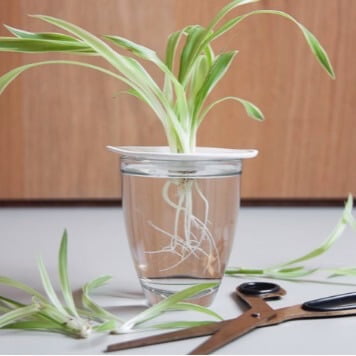
How to Take a Runner Offset Cutting
- 1 Disinfect your snips using alcohol or a 10 percent bleach solution.
- 2 Find a runner plantlet along a flowering or main stem and cut it away from the mother plant. Make the cut close to the plantlet but don’t cut into its growing crown or roots.
- 3 Dip the base into rooting hormone.
- 4 Set the base of the runner plantlet in waterto stimulate new root growth (in which case, leave in water until roots are 2 to 3 inches long) or set it in a plug tray.
- 5 Runner plantlet cuttings typically benefit from use of a humidity dome or plastic cover for a short time; however, many will root and shoot just fine uncovered. Do keep the growing media moist if using potting mix or substrates such as Oasis or rockwool.
- 6 Then follow steps 7 to 9 in “How to Take a Stem-Tip Cutting” (page 144).
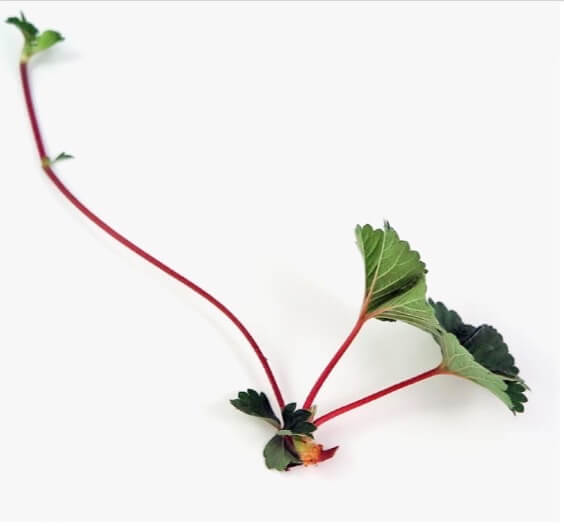
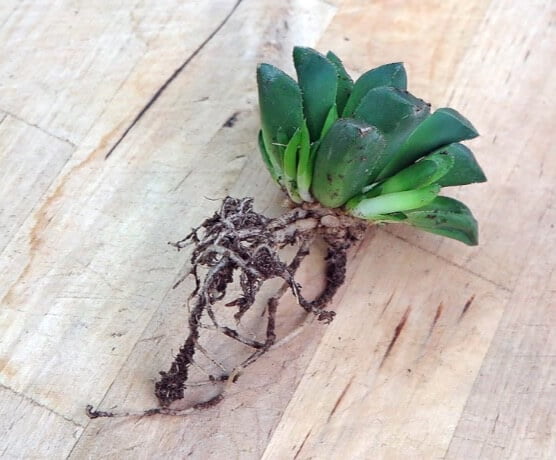
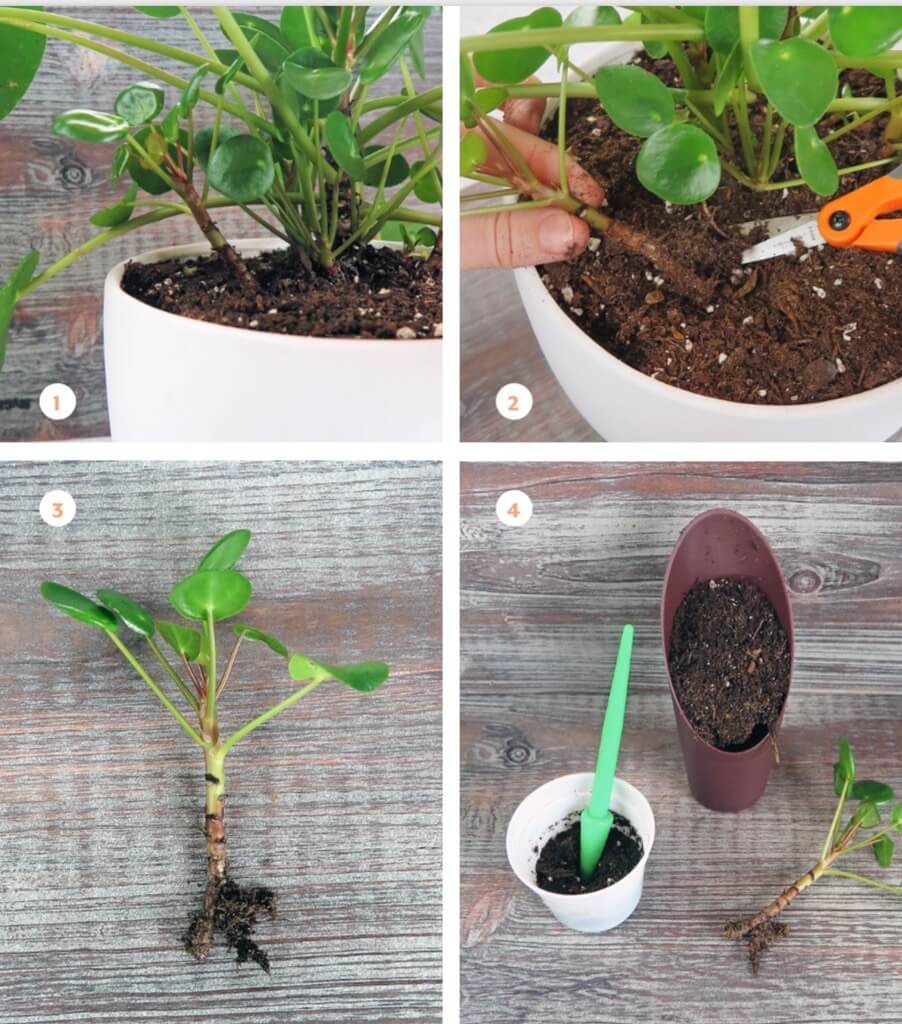
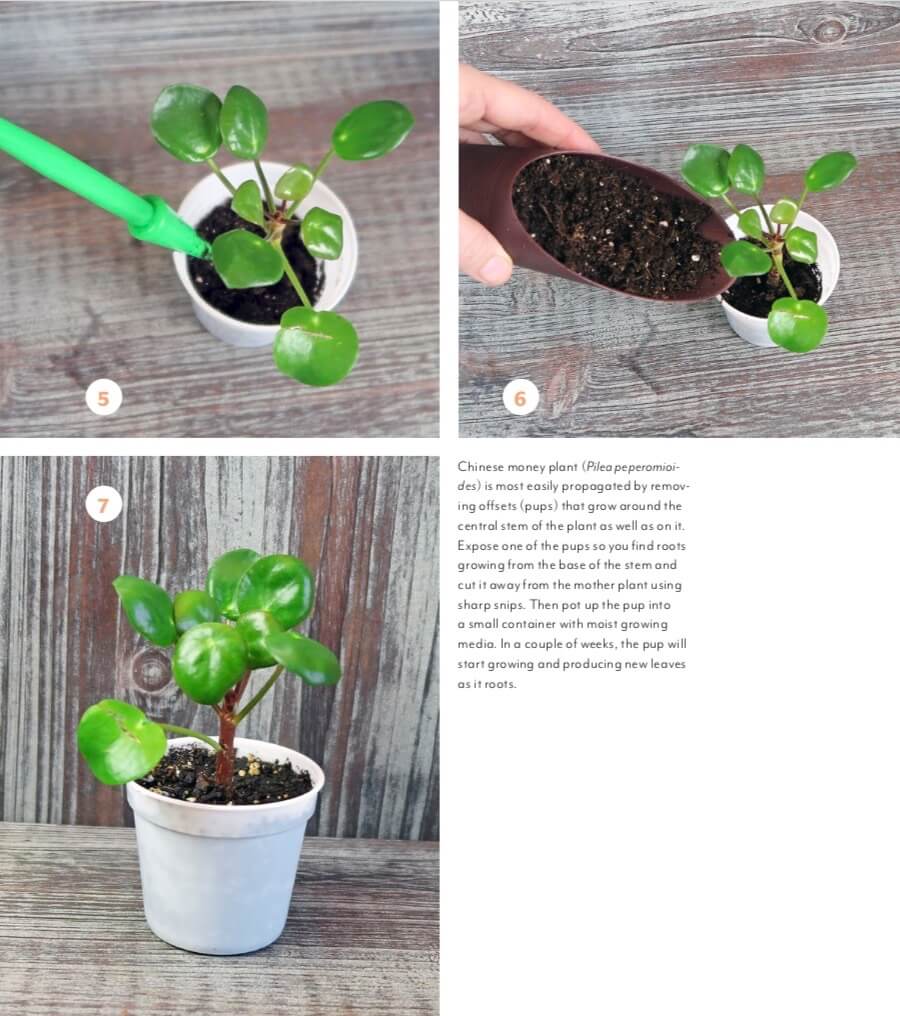
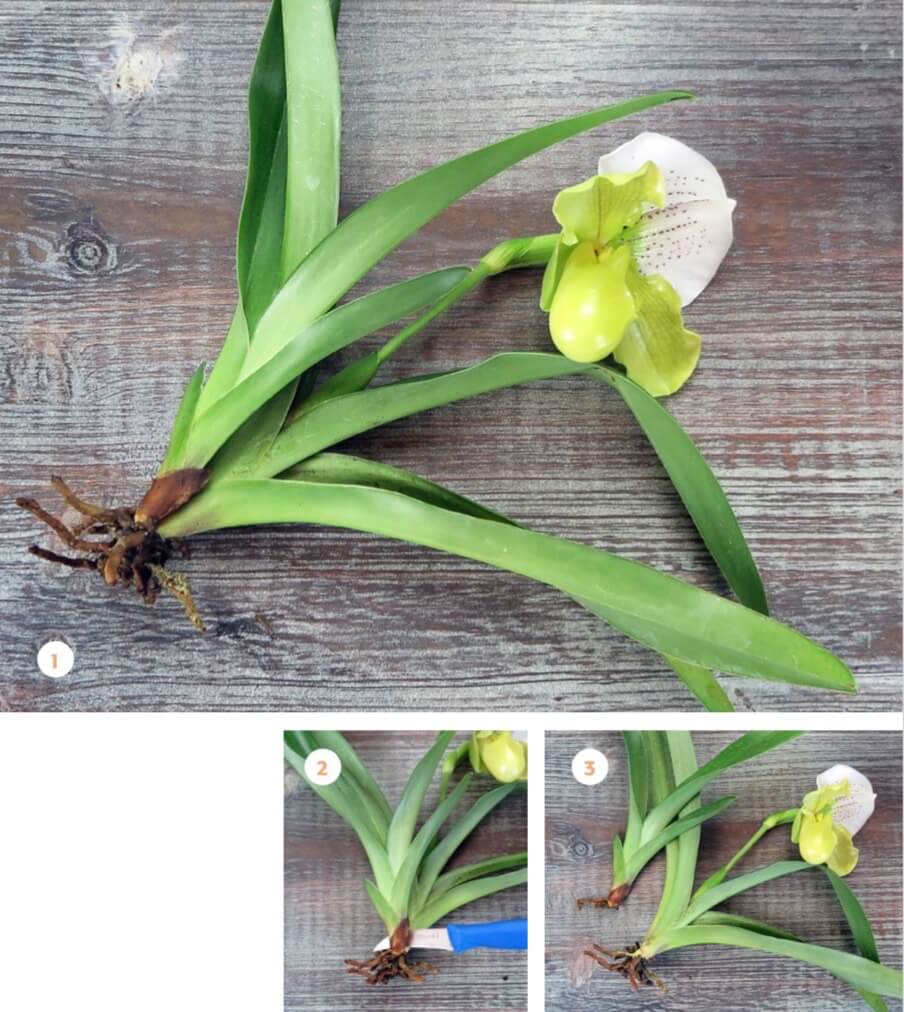
How to Take a Pup Offset Cutting
- 1 Disinfect your snips, sharp knife, or razor blade using alcohol or a 10 percent bleach solution.
- 2 Find a pup growing around the base of the plant crown. Pull away the soil from around the pup if you’ve removed it from beneath the growing crown. If you are repotting houseplants, you may take the plant completely out of the pot and brush away soil to expose pups. Cut away the pup, making sure to include part of the underground stem that has some root initials. If working with an air plant, you can usually gently pull the pup away from the crown with your hands.
- 3 Allow pups of succulent plants to callus for several days.
- 4 Set the base of pups in water to stimulatenew root growth (in which case, leave in water until roots are 2 to 3 inches long) or set in small pots or plug trays filled with a loose growing media.
- 5 Most pup cuttings will root just fine uncovered but do keep the growing media moist to the touch.
- 6 Then follow steps 7 to 9 in “How to Take a Stem-Tip Cutting” (page 144).
Tiếng Việt
Có một số loại cây có khả năng thực hiện hầu hết các công việc nhân giống cho bạn từ trước. Những cây như vậy tạo ra những cây con nhỏ, có đầy đủ chức năng hoàn chỉnh với hệ thống rễ ở cuối thân hoa dài, ở gốc ngọn, dọc theo thân ở nách lá, hoặc thậm chí dọc theo mép lá. Những loài vô tính nhỏ bé này có một vài tên gọi, chẳng hạn như chồi hoặc cây con. Đây là một cách tự nhân giống hiệu quả ở cây trồng, đặc biệt nếu cây con tình cờ được thụ phấn bởi một cây cùng loài ở gần đó. Trồng những cây con này thực sự là một cách dễ dàng để trồng thêm những loại cây bạn yêu thích.
Cỏ Lan Chi (airplane plant) là một loại cây trồng nhiệt đới cổ điển tạo ra hàng loạt các cây con, khiến nó trở thành một loại cây ưa thích để nhân giống tại nhà. Bạn sẽ nhận thấy những cây này phát triển các chồi hoa dài và ở phần cuối của những chồi này sẽ có một số cây con. Cây Lan Bướm Đêm (moth orchid) đôi khi tạo ra các cây con trên thân chính hoặc đôi khi trên thân hoa, những cây con này được gọi là keikis khi đề cập đến Phong Lan (orchid). Thường thì chúng sẽ tiếp tục phát triển lớn hơn trên thân cây. Ngay sau khi cây con tiếp xúc với nước hoặc đất, nó sẽ phát triển mô rễ mới và tiếp tục phát triển. Tất cả những gì bạn phải làm là tách ra và ngâm trong nước để kích thích sự phát triển của rễ hoặc trồng trong một thùng nhỏ với hỗn hợp bầu.
Dâu Tây (strawberry) là một loại cây bò khác, chúng cho ra những chồi non (cành) dài có chứa các cây con nhỏ với các rễ nút nhỏ chỉ chực chờ bám vào đất.
Nhiều loài cây mọng nước, bao gồm Lô Hội (aloe), cây Thùa (agave), cây Dứa Cảnh (bromeliad), cây Móng Rồng (haworthia) và cây cỏ Gương (pilea), phát triển thành những cây con trên thân ngầm gần với bề mặt đất, hoặc thậm chí trực tiếp trên thân cây. Bạn sẽ thấy cây con nhú lên từ đất ở gốc cây mẹ. Một số cây không khí, chẳng hạn như cây Dứa Cảnh (bromeliad), phát triển cây con ngay trên ngọn phía trên vùng rễ. Bạn có thể nhẹ nhàng kéo hoặc cắt những cây non này ra khỏi cây mẹ (giữ lại một số rễ ban đầu).
Tốt nhất là để các cây mọng nước mới cắt khô và chai sần trong vài ngày trước khi giâm trong nước hoặc đặt vào khay giâm hoặc thùng nhỏ có chất trồng. Nếu bạn tách cây con từ các cây ngoài vườn và các chậu cây trong nhà, thì thời điểm tốt nhất để làm điều này là cuối mùa xuân và đầu mùa hè, khi cây cối đang phát triển mạnh nhất.
Nhiều loài Lan mọc thẳng đứng (đơn thân) và tạo ra các keikis nhỏ (chồi) dọc theo thân, bạn có thể tách ra và trồng vào chậu theo cách tương tự. Bạn có thể thúc đẩy sự phát triển của keikis bằng cách giâm một cây Phong Lan (orchid) thẳng đứng đã mọc cao và để nó tạo ra các rễ phụ dọc theo thân, giống như việc giâm ngọn. Đơn giản chỉ cần cắt phần ngọn thân bên dưới nơi rễ đang phát triển và trồng nó vào chậu. Sau đó, cây Lan (orchid) sẽ bắt đầu phát triển các keikis dọc theo phần dưới của thân cây vẫn còn trên cây mẹ ban đầu.
Một số loài Lan mọc nghiêng (giao hưởng), chẳng hạn như Lan Hài (Paphiopedilum spp.), tạo ra các nhánh xung quanh thân chính. Những chồi này có thể được tách theo cách tương tự như những cây mọng nước nhỏ.

Cách giâm cây con
- 1 Khử trùng dụng cụ cắt bằng cồn hoặc dung dịch thuốc tẩy 10%.
- 2 Tìm cây con chạy dọc theo cành hoa hoặc thân chính và cắt khỏi cây mẹ. Cắt gần với cây con nhưng không cắt vào thân hoặc rễ đang phát triển của nó.
- 3 Nhúng phần gốc vào hormone tạo rễ.
- 4 Đặt phần gốc của cây con trong nước để kích thích sự phát triển của rễ mới (trong trường hợp này, để trong nước cho đến khi rễ dài từ 2 đến 3 inch) hoặc đặt cây con vào khay cắm.
- 5 Cây con thường được hưởng lợi từ việc sử dụng mái che ẩm hoặc nắp đậy bằng nhựa trong một thời gian ngắn, tuy nhiên, nhiều cây sẽ mọc rễ và phát triển tốt chỉ cần được che đậy. Giữ ẩm cho chất trồng nếu sử dụng hỗn hợp bầu hoặc giá thể như Oasis hoặc rockwool.
- 6 Sau đó, hãy làm theo các bước từ 7 đến 9 trong phần “Cách giâm ngọn thân”.





Cách giâm chồi
- 1 Khử trùng dụng cụ cắt, dao sắc hoặc lưỡi dao cắt bằng cồn hoặc dung dịch thuốc tẩy 10%.
- 2 Tìm một chồi đang phát triển xung quanh gốc cây. Xới đất xung quanh chồi nếu bạn đã loại bỏ đất bên dưới thân cây đang phát triển. Nếu bạn đang thay chậu cho cây trồng trong nhà, bạn có thể lấy cả cây mẹ ra khỏi chậu và phủi đất để có thể thấy rõ chồi con. Cắt chồi sao cho có chứa một phần của thân ngầm và có một số rễ. Nếu giâm chồi cây không khí, bạn có thể nhẹ nhàng kéo chồi ra khỏi tán bằng tay.
- 3 Để những chồi non trong vài ngày.
- 4 Giâm chồi trong nước để kích thích sự phát triển của rễ mới (trong trường hợp này, để trong nước cho đến khi rễ dài từ 2 đến 3 inch) hoặc đặt trong chậu nhỏ/ khay chứa chất trồng.
- 5 Hầu hết các chồi được giâm sẽ chỉ ra rễ tốt khi không được che đậy nhưng phải giữ ẩm cho chất trồng.
- 6 Sau đó, hãy làm theo các bước từ 7 đến 9 trong phần “Cách giâm ngọn thân”.
